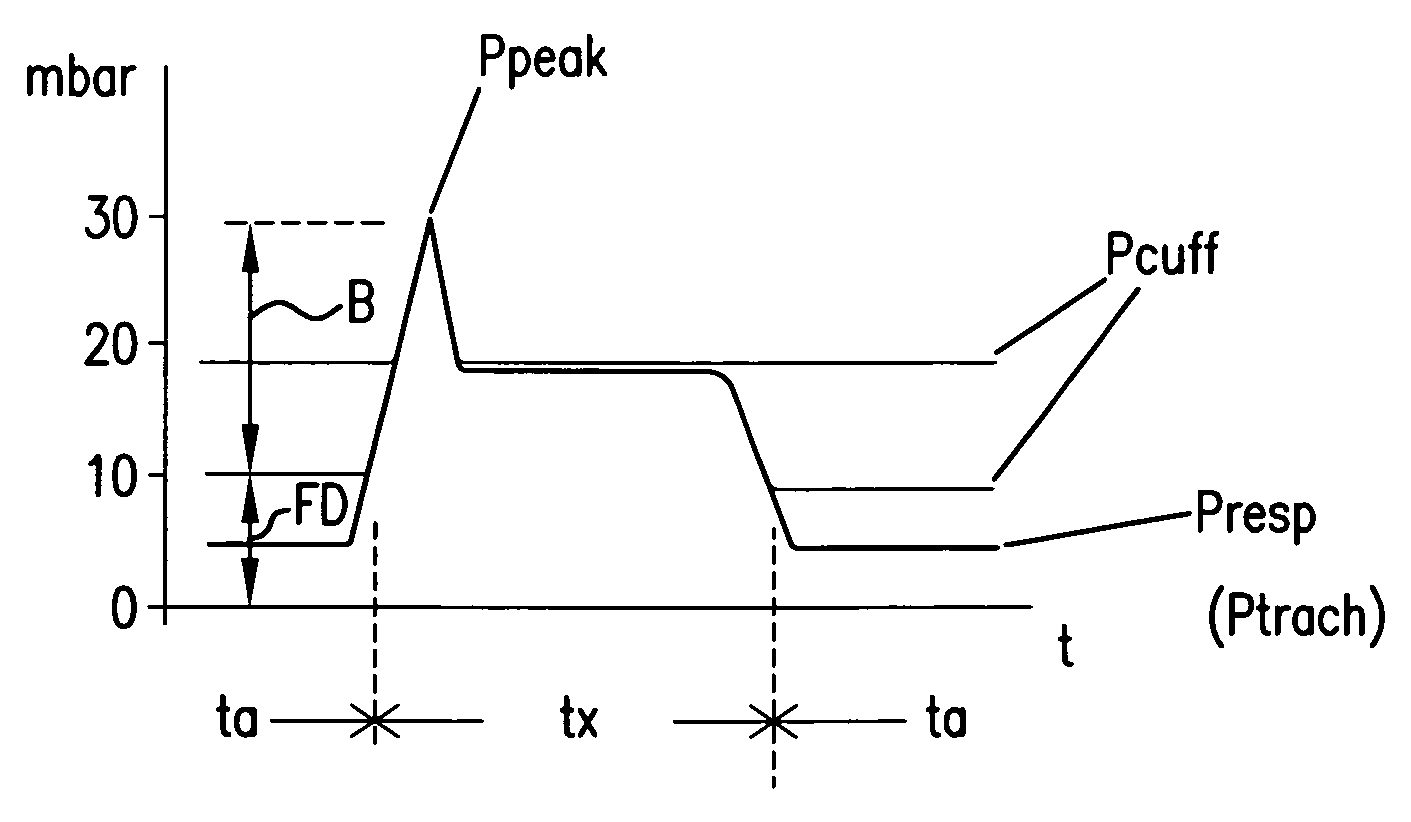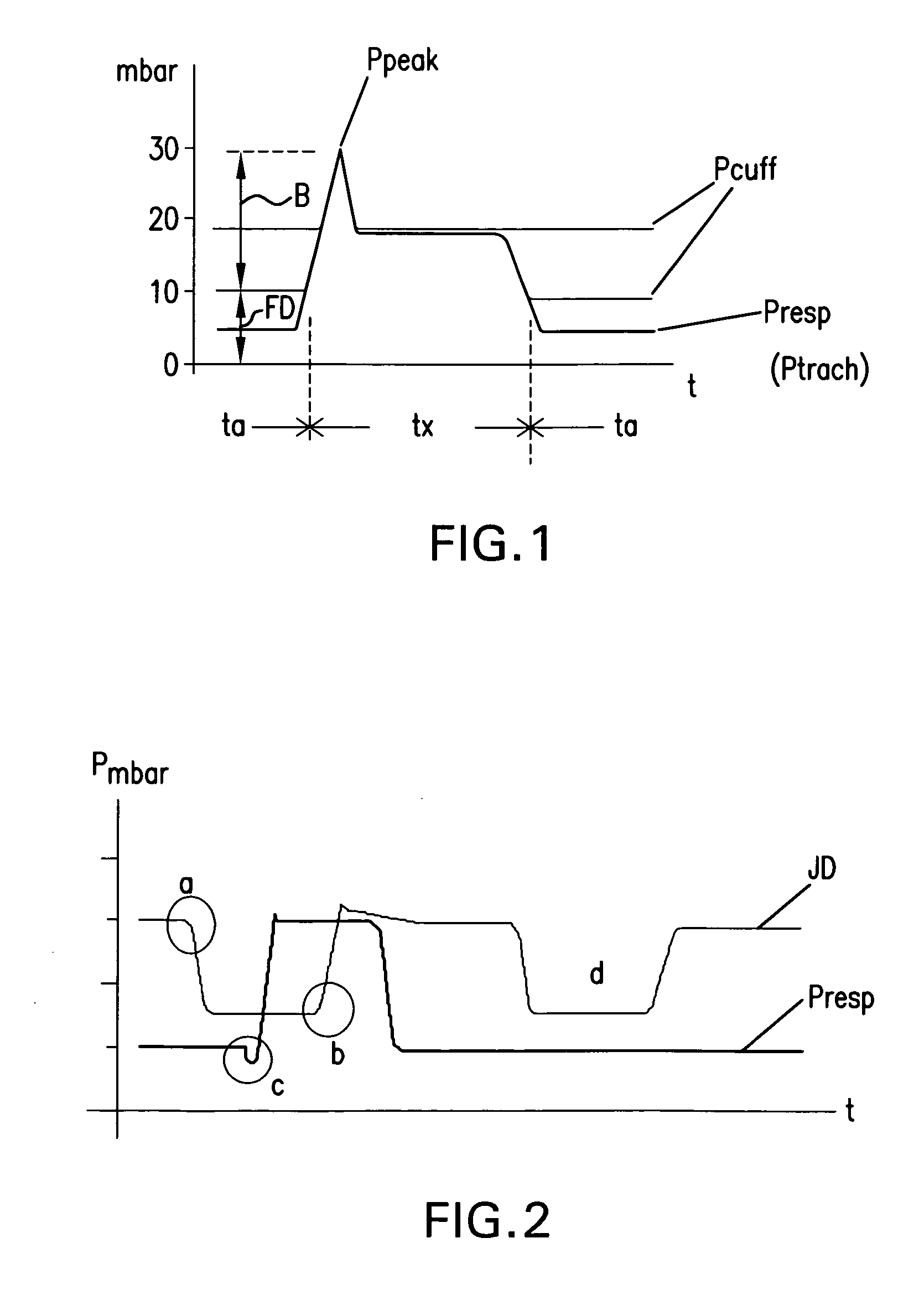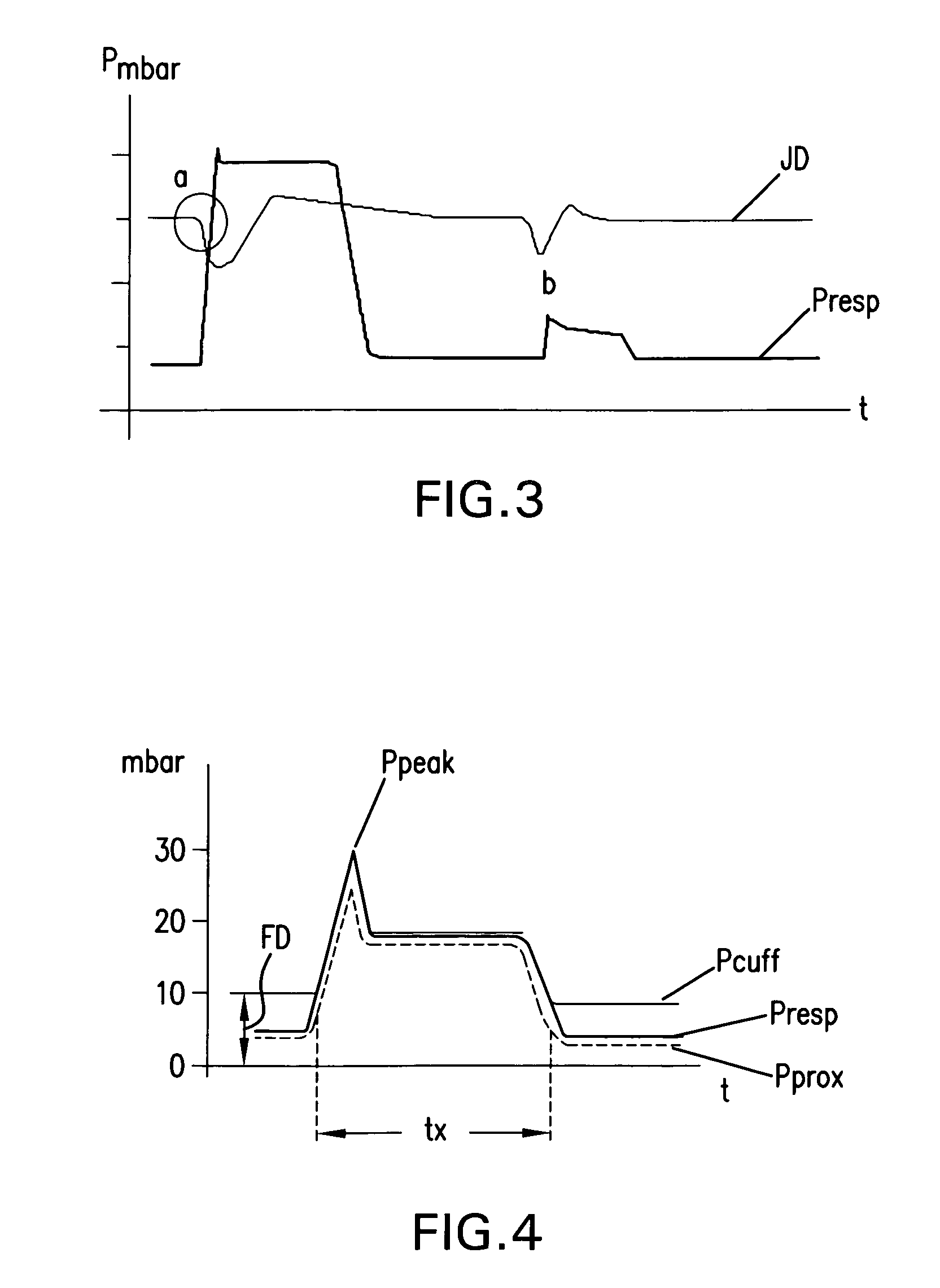Method for controlling a ventilator, and system therefor
- Summary
- Abstract
- Description
- Claims
- Application Information
AI Technical Summary
Benefits of technology
Problems solved by technology
Method used
Image
Examples
Embodiment Construction
[0032]FIG. 6 shows a function diagram for assisted or controlled ventilation of a patient P, into whose trachea a tracheal tube 1, shown in FIG. 5, is introduced, in order to introduce the breathing gas AG and detect the airway pressure by suitable measuring instruments. On the one hand, the intra-cuff pressure Pcuff is detected continuously and delivered to a control device ST for the ventilator BG. The control device includes a measured value and signal processor with an evaluation unit, and in accordance with the detected intra-cuff pressure Pcuff, it furnishes a signal S for controlling the ventilator. This signal is used, for example to control either the trigger (tripping a ventilation stroke) in assisted ventilation, or the pressure limiting function (maximal or “upper ventilation pressure”), for example, which is included in all modes of ventilation. Accordingly, with this signal S, the supply of breathing gas AG from the ventilator BG to the patient P is controlled. It is a...
PUM
 Login to View More
Login to View More Abstract
Description
Claims
Application Information
 Login to View More
Login to View More - R&D
- Intellectual Property
- Life Sciences
- Materials
- Tech Scout
- Unparalleled Data Quality
- Higher Quality Content
- 60% Fewer Hallucinations
Browse by: Latest US Patents, China's latest patents, Technical Efficacy Thesaurus, Application Domain, Technology Topic, Popular Technical Reports.
© 2025 PatSnap. All rights reserved.Legal|Privacy policy|Modern Slavery Act Transparency Statement|Sitemap|About US| Contact US: help@patsnap.com



